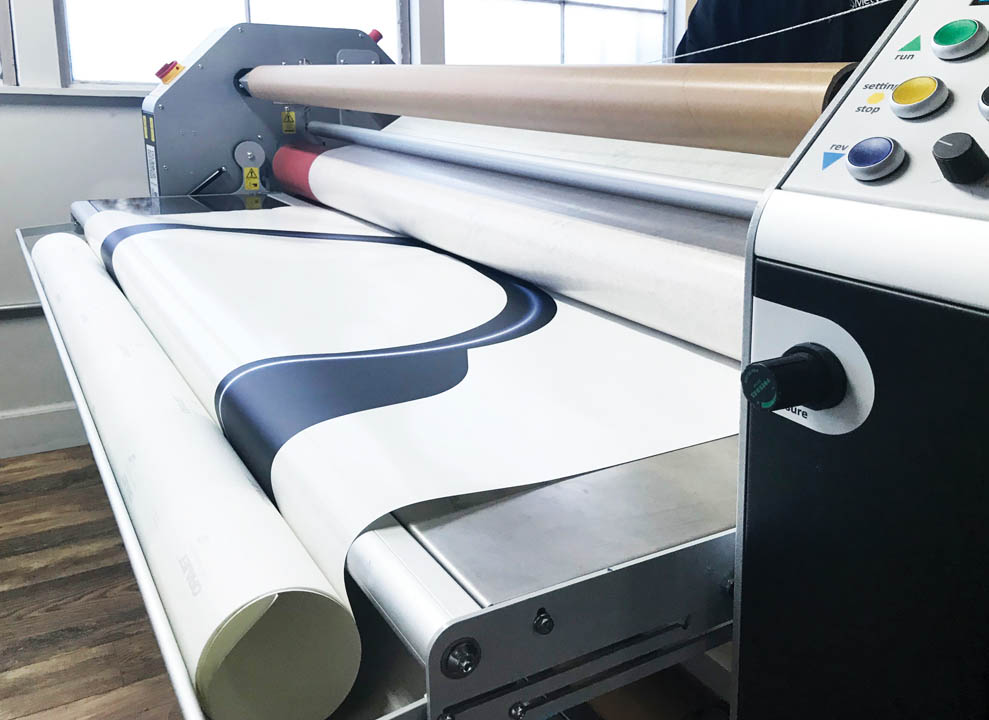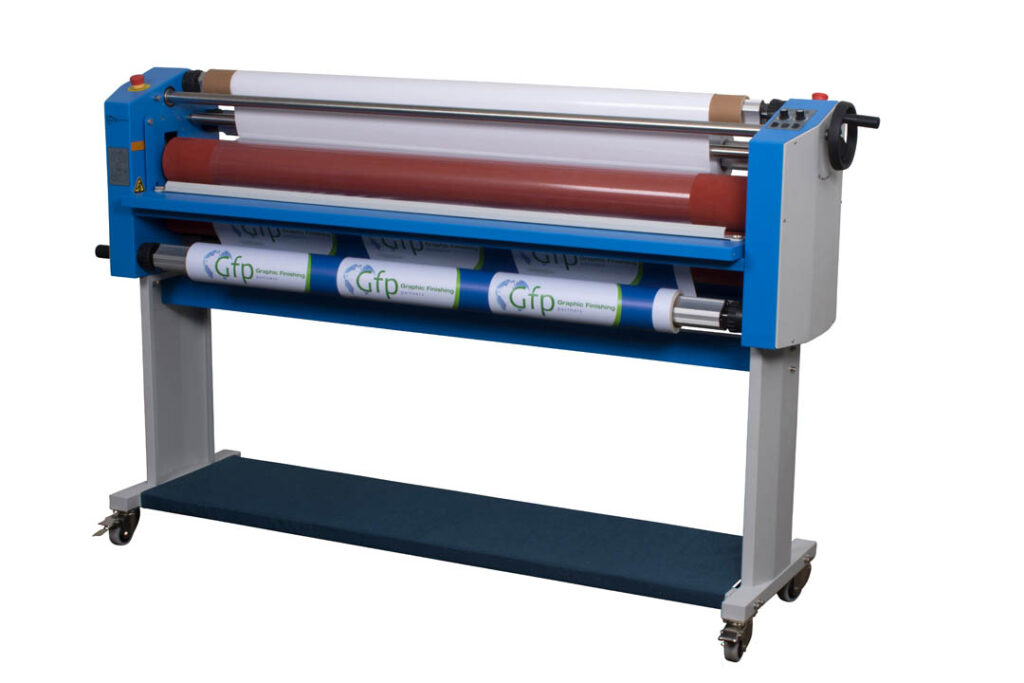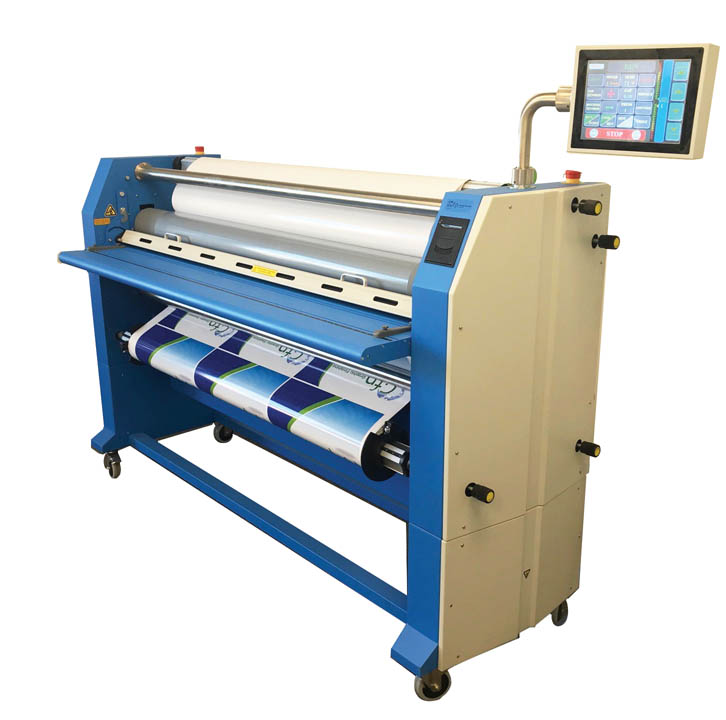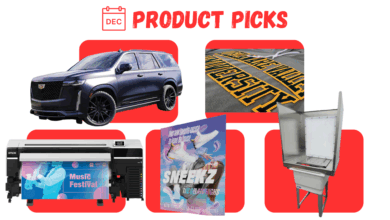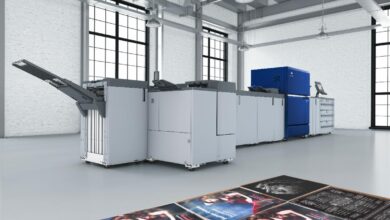The graphics and promotional products industry is a leader in advanced technology. By and large, there is an innovative tool or snazzy equipment to craft any desired result for mass or niche production. While attention spans are often dazzled by versatile materials, sophisticated digital printers, and do-it-all laser engraving machines, graphics specialists would be hard-pressed to serve up a superior product without the finesse of finishing equipment.
“A car may have a transmission and motor, but without wheels or paint, it’s really just in the works — not a finished product,” said Sam Crosby, dealer manager at Graphic Finishing Partners. “Similarly, what comes off the printing press in its natural state usually doesn’t do anything for the customer, but proper finishing equipment takes that same graphic or print and makes it truly sellable.”
He points to wall graphics as a prime example. An image comes to life thanks to a wide-format printer, but then it must be trimmed to size, as well as laminated for protection and longevity.
“Finishing equipment takes everything to the next level — completing the process and protecting the investment in a way modern consumers expect,” Crosby explained.
The potential, he said, is extensive. In recent years, the finishing machinery market size has expanded significantly. Valued at $88.23 billion in 2023, it is projected to reach $253.4 billion by 2031 — swelling at a compound annual growth rate of 11.58% during the forecast period 2024-2031.
Technological advancements in automation, Internet of Things integration, e-commerce, and print-on-demand, coupled with evolving manufacturing and eco-friendly methods, are complex layers of market growth — but so are consumer expectations and diverse demand.
“The growing popularity of customized goods calls for adaptable finishing equipment that can work with a range of materials and styles,” according to Verified Market Research, a global research and consulting firm.
In order for businesses to thrive in today’s hypercompetitive marketplace, shop owners must invest in finishing equipment and techniques to keep pace with the modern consumer’s voracious appetite. While the upfront costs vary, the advantages are shared. Proper finishing equipment increases efficiencies by automating tasks and optimizing workflows, thus halting excessive waste, creating consistency, as well as reducing operation and labor costs. In addition to raising the bar in product quality, the equipment lays a foundation for expansion in scope, output, and revenue — ultimately leading to increased profitability.
“Businesses can’t afford to not invest,” Crosby said.
Shopping options
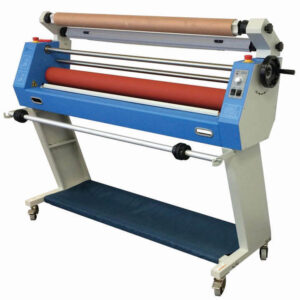
The term finishing equipment broadly describes various machines and processes used to enhance the appearance, durability, and functionality of any printed material. Whether the machinery is hooked up in-line or offline, all finishing equipment works in tandem with a shop’s printing system to perform value-added operations. Feature examples include smoothing surfaces; cutting and slitting; folding and binding; scoring and perforating; laminating and die-cutting; applying unique finishes like foil stamping, embossing, and coating; as well as collating, numbering labeling, and packaging.
Business owners across the spectrum benefit from specialized equipment customized to their individual needs.
In the print industry, professionals rely on numerous finishing operations to transform ordinary materials into extraordinary results.
“Every print shop must finish something, somehow. Products need to be trimmed one way or another, whether manually or by machine — but a human risks error. If you’re using a knife for each and every poster, then it can slip,” said Chase Pender, business development, Supply55. “With labor costs on the rise, automation is key.”
Cutting, trimming, and die-cutting machines are valuable assets, allowing staff to effortlessly construct specific — and, at times, complex — shapes and sizes in a variety of materials. Traditional vinyl cutters, for example, are reliable solutions for roll-fed media, while flatbed cutters are paired with flatbed UV-cure printers and serve as a top choice for rigid substrates.
Some cutting machines process a multitude of media, including direct-to-film transfers, paper, wallpaper, canvas, laminated substrates, banner material, polycarbonate, and other non-woven roll goods.
Ideal for extra-large prints, posters, banners, or architectural blueprints, plotters are a solid complement to other finishing equipment. Since they can handle a wide variety of media like paper, vinyl, canvas, and even fabric, plotters are considered a versatile investment in graphic design and printing. Many plotters — particularly flatbed models — also offer cutting capabilities.
Across other areas of the printing industry, binding machines easily convert pages into books, booklets, and bound documents, while complementary settings standardize and streamline multistep processes like brochures or flyers.
“No matter the job, the right finishing equipment offers peace of mind in accuracy and repeatability. In the end, that equates to better quality for the customer and a faster, more profitable turnaround for you,” Pender added.
Lamination
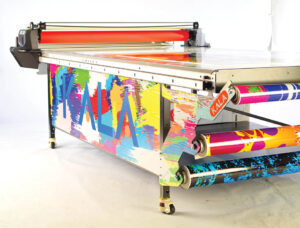
In the realm of lamination, finishing equipment not only provides a durable UV layer against harsh outdoor elements but also a more professional-looking graphic.
“We’re in the business of over-laminating a print with UV, chemical, and abrasion resistance that not only extends the life of the product, but also makes it easy to install and maintain,” Crosby said.
While there are various options for business owners to consider, a few reign supreme. Roll laminators use heated rollers to melt glue on a film roll and apply it to the substrate with pressure rollers. Traditionally, they are ideal for larger, high-volume projects and, oftentimes, a method of choice among schools, print shops, and businesses alike. Unlike roll laminators, cold laminators rely on pressure-sensitive film and pressure rollers without heat, making them suitable for heat-sensitive materials like photographs, digital prints, and specialty inks.
Built off of cold laminators, some machines add top heat for better over-lamination, mounting, and board-coating results. With integrated rear rewind for roll-to-roll applications and a swing-up feed table, these machines are a popular choice to complete everything from signs, banners, displays, and point-of-purchase materials to floor, window, and
vehicle graphics.
Last but not least: a wide-format machine is ideal for oversized paper, posters, and signage. Although some wide-format equipment can be used for hot, cold, and heat-assisted lamination, they are two distinct setups.
The vital importance of high-quality lamination equipment cannot be overstated, Crosby said. A wrap shop, for example, may have a great graphic — even a superior product — but without a reliable cutter and laminator, they are restricted to what can be done by hand.
“Without these capabilities, they’re limited in professional scope, product, and installation,” Crosby explained. “Just like you need the caboose of a train to safeguard and help navigate, a shop needs to invest in the whole process — not just part of it.”
Choosing the right machine
While all finishing equipment adds a level of functionality that a stand-alone printer lacks, not all machinery is created equal. Industry professionals stress the importance of partnering with professionals who understand marketplace nuances and specialize in matching customers with the best product and expert installation.
“Your finishing equipment will outlive the printer by a lifetime, so don’t underestimate the value of the right manufacturer, the right build quality, and the right support,” Pender said. “Talk to different manufacturers, weigh all options, and make sure the people you purchase from have your back in the long haul.”
While budget is always important, he encourages decision makers to weigh the overall value instead of just the top-line expenditure cost. With the proper machinery, business owners can streamline stubborn inefficiencies and outperform current production, while providing enough breathing room to handle the next few notches of growth.
Pender put a pin in the misconception that a shop must pull the trigger on a top-of-the-line printer before investing in finishing equipment.
“A lot of people take the path of upgrading the printer first, but if you don’t have a cutter to handle the output of the printer, you’ll have a backup,” he explained.
He recalled a customer who, armed with a roll-to-roll UV printer, was in a similar situation — experiencing year-over-year growth and considering a printer vs finishing equipment upgrade. Upon evaluation, the entrepreneur decided to purchase a trimmer to help automate banner production and never looked back. Since then, he has invested in a more sophisticated printer system and is printing banners all day long.
“It all started with the finishing equipment upgrade, and the customer still has more room to grow. He can add more printers, and that same finishing equipment will be there to support his business,” Pender said.
As manufacturers continue to refine their product offerings, shop owners benefit from the power of choice. Machines will advance in speed, accuracy, and user-friendly features — gifting small businesses greater automation, efficiency, and output. Regardless of the investment, “take good care of the equipment, and it will take good care of you,” Pender said.
